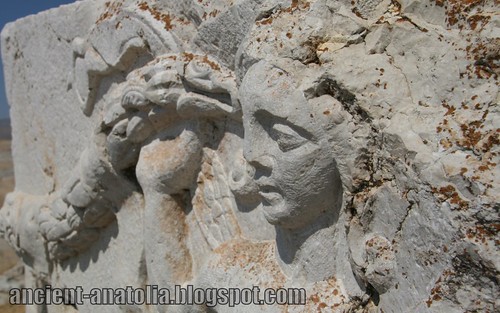
Sculpture at Antiochia in Pisidia, originally uploaded by voyageAnatolia.blogspot.com.
Pisidia was a region of ancient Asia Minor located north of Lycia, and bordering Caria, Lydia, Phrygia and Pamphylia. Ancient site of Antioch in Pisidia was also known as Antiochia in Phrygia, Land of King Midas. The city lies on a hill with its highest point of 1236 m. approximately 1 km northeast of Yalvac, the modern town of Isparta Province, Turkey.
There are many other Antioch cities in the Old World. Antiochus was the name of thirteen kings of the Seleucid Empire, successor of Alexander the Great. The Seleucid Empire was centered in the near East and at the height of its power included central Anatolia, the Levant, Mesopotamia, Persia, today's Turkmenistan, Pamir and parts of Pakistan.